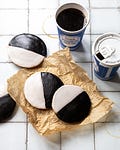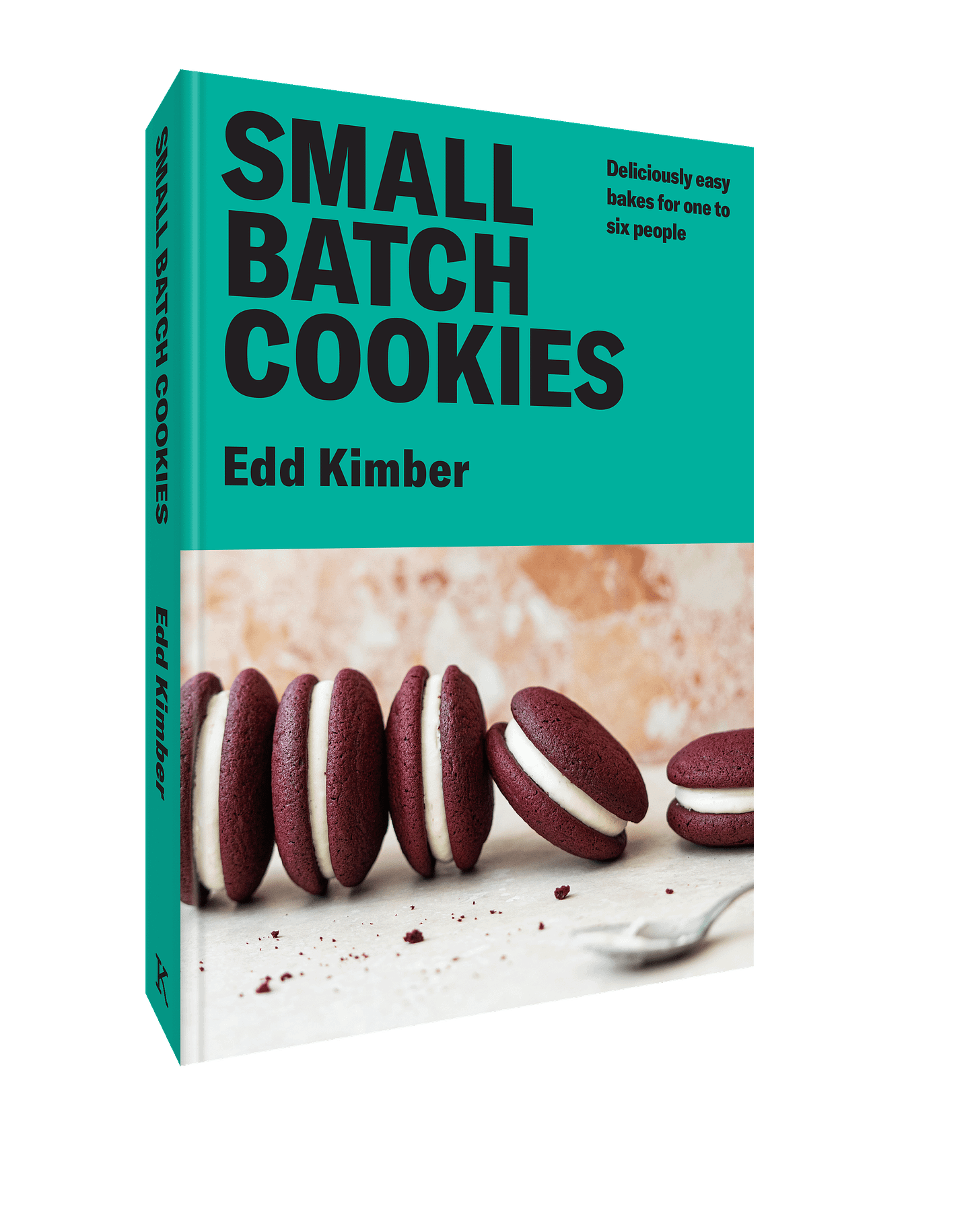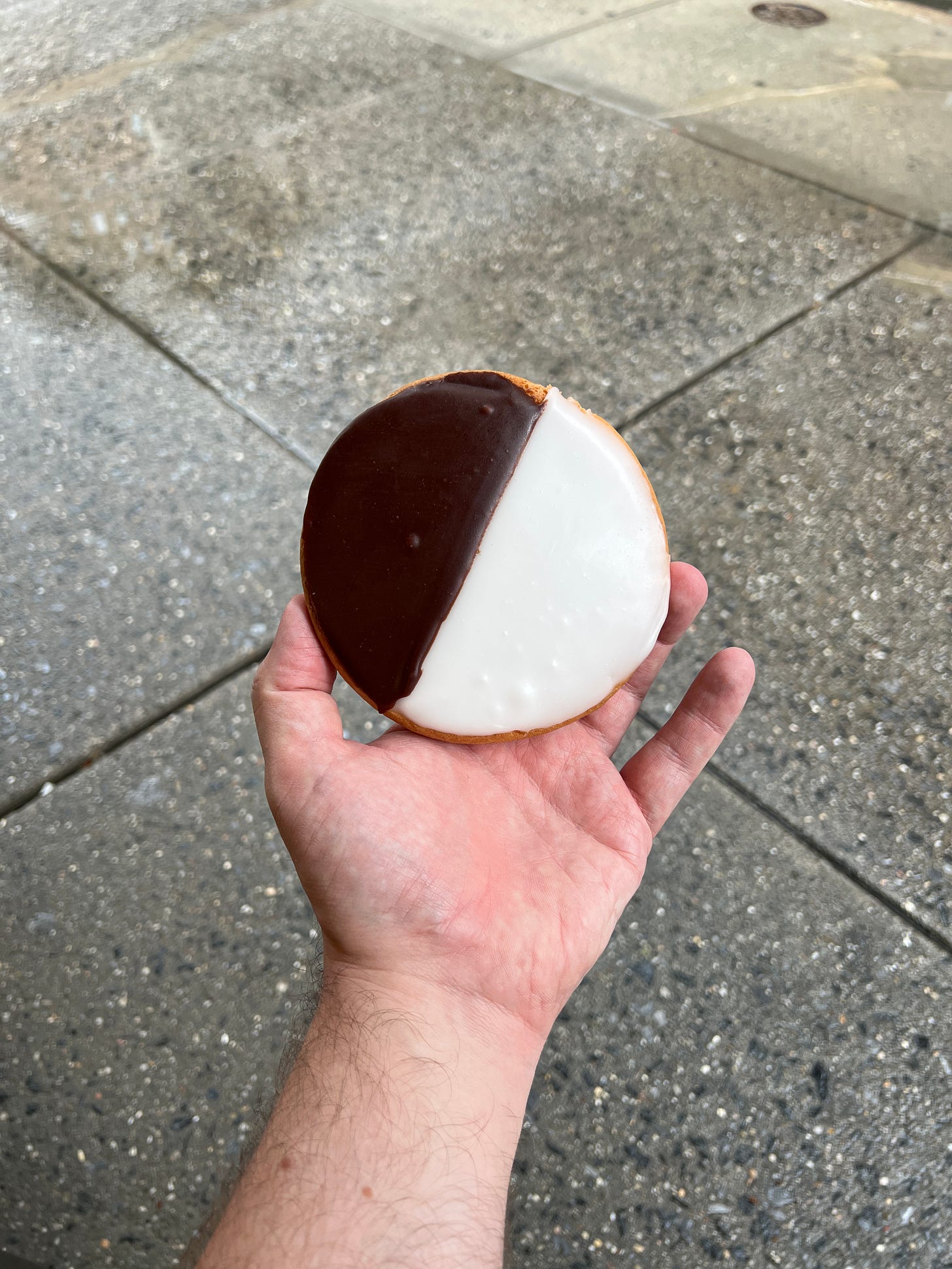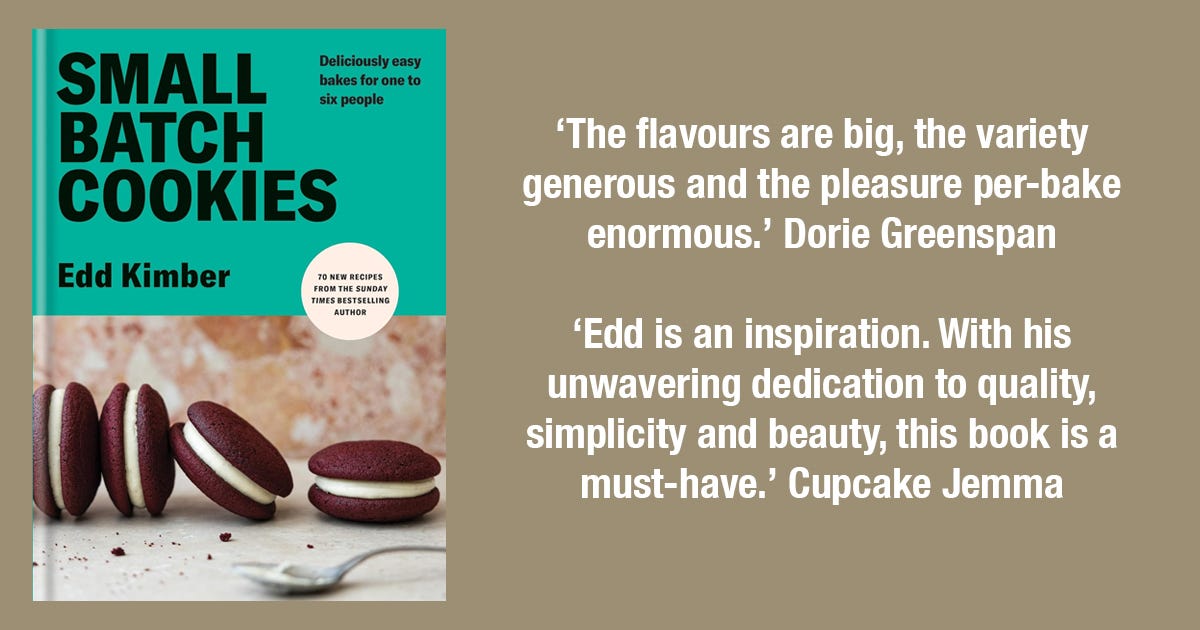🎉 Welcome to my newsletter, The Boy Who Bakes, a subscriber-supported newsletter, dedicated to all things baked. You can become a paid subscriber to get access to exclusive weekly recipes and to get access to the archive including every recipe posted on the newsletter. It costs just £5 a month and that helps me continue writting this newsletter. To subscribe, to either the paid or free newsletter, click the link below.🎉
Another newsletter coming to you outside of my usual Friday posting schedule? That can only mean something special, and I’d like to think today counts as something pretty special. Today marks the day that Small Batch Cookies, my little book baby, is finally out in the US and Canada. I am beyond excited for my friends across the pond to finally see the book and to bake from it. As the undisputed kings and queens of cookies, I am hoping the book finds a home in many kitchens across the two countries. To celebrate the release, I thought I would share one of my favourite recipes from the book, an American classic, the Malted Black and White Cookies.
If you’ve already read the book, you’ll know I talk a little bit about the definition of what a cookie is and what the word conjures up depending on where you live. I and the book took quite a broad and international approach. If a recipe is referred to as a cookie, I was happy including it in the book, an approach that has rustled a few traditionalist feathers. Thankfully, these people are in the distinct minority, but I thought it would be interesting to look into their argument a little.
To some Brits, the word cookie means something that is closely aligned to a classic chocolate chip cookie, because cookies are American imports. What existed before are biscuits. The distinction between the two is murky, but generally cookies are bigger, biscuits smaller, cookies softer, biscuits crisp. The problem comes when you look too closely at that definition. Are Oreo’s cookies? Well, to Americans, they would be a cookie, but to my fellow Brits, they’re definitely biscuits. You can see where the lines become fluid and the definition starts to break down. Look at the Black and White Cookie. This East Coast classic is without a doubt made with a cake batter but is always referred to as a cookie. Does that mean a cookie is simply a single-serve small treat? Possibly.
My final definition was something like this: a cookie is a small, individually baked treat that is normally sweet and normally round. Except for when they’re not. Helpful, I know. Even Merriam-Webster describes a cookie as a small flat cake? Make it make sense. The reason for this confusion makes a bit more sense when you release that the origin of the word ‘cookie’ is ‘koekje’ which means little cake in Dutch. Still doesn’t really make defining what exactly a cookie is and isn’t any easier.
Regardless of your own personal definition, it’s safe to say that this week's recipe is thought of as a cookie by those that bake them and those that enjoy them.
Black and White Cookies are a classic recipe from the East Coast. You can find them in just about every NYC bodega, deli, and even in some fancy bakeries. Black and White might be the most common name for these little treats today, but they’ve been called various different names, including Half and Half Cookies, Unity Cookies, and Half Moon Cookies. The latter may actually be the original name. Some credit the Half Moon Cookies, made in upstate NY, as the original recipe. This version of the cookie was a chocolate cake batter with a thick layer of vanilla and chocolate frosting in the same eye-catching design that's used today. The countering origin story is that the cookie traces its origin to Germany. Glasers Bakery in Manhattan, sadly now closed, claims that their black and white cookie recipe was among the original recipes that the German immigrant founders used when they set up shop in 1902. What unites both of these two cookies is their use of frosting, which is now much less common, fondant being the go-to topping.
Whatever the true origin, it's impossible to deny the cookies association with New York. On my last visit to the city, I attempted to try as many versions of the cookie as I could, but with so many on offer, I only managed a handful of bakeries. My favourites were made by Russ and Daughters, whose version is made with a hint of lemon and, I suspect, the tinniest amount of almond extract. Their fondant is dried so that it isn’t at all sticky. Orwashers, another favourite, make a very fluffy version, and if you want a really good example of a classic, this and William Greenberg make two that feel very traditional. If you want something a bit different, Empire Cake makes a version that is dipped entirely in chocolate, not traditional but absolutely delicious.
For my version, I really liked the dense and cakey versions, but I loved the additional flavours used by Russ and Daughters. This got me thinking: if I were to add a different spin to this classic recipe but have it still feel very New York, what would that be? In the end, I went with Malt. Taking inspiration from another New York classic, the egg cream (edit: as a reader pointed out I got confused I meant malted’s, another classic drink), I thought the addition of malt would feel entirely appropriate and delicious. The flavour of the malt isn’t enough to overpower the chocolate or the vanilla; it simply adds a warm toasty note that gives the cake a bit more flavour and a better springboard for the flavours of the fondant topping.
Malted Black and White Cookies
Makes 6 large cookies
85g unsalted butter, room temperature
100g caster sugar
1 large egg
1/2 tsp vanilla bean paste
1/4 tsp fine sea salt
150g plain flour
4 tbsp malted milk powder (horlicks, ovaltine etc)
1/4 tsp baking powder
1/4 tsp bicarbonate of soda
60ml sour cream
Fondant Icings
180g icing sugar
1 tbsp liquid glucose (or golden syrup or corn syrup)
1/2 tsp vanilla bean pastee
2 tbsp cocoa powder
Preheat the oven to 180ºC (160ºC Fan) and line a large baking tray with parchment paper (a half sheet pan is perfect for this recipe).
In a large bowl, using an electric hand mixer, beat together the butter and sugar until light and fluffy, about 5 minutes. Add the egg, vanilla, and salt and mix briefly until combined. Add the flour, malt powder, baking powder, and bicarbonate of soda and mix until a stiff batter is formed. Add the sour cream and mix until combined.
Using a 60ml (1/4 cup) cookie scoop, spoon the dough into 6 equal rounds on the prepared baking tray, leaving plenty of room for spreading. If you are using smaller baking trays, you may want to split the cookies between two trays to ensure they don’t spread into each other.
Bake for 12-13 minutes, or until the edges are golden but the cookies are still a touch pale in the centre but also spring back to a light touch. Remove from the oven and set aside until fully cooled.
For the icings, mix together the icing sugar, liquid glucose, vanilla, and 2 tablespoons of boiling water until smooth and lump free. Weigh half of the frosting into a separate bowl and mix through the cocoa powder and about 1/2 tablespoon of boiling water. The finished icings should have the same consistency as each other; they can be adjusted by adding more water if too thick or more icing sugar if too thick. The icing should be almost toothpaste-like in consistency.
To decorate the cookies, spread the vanilla icing over the flat side of the cookies, coating just one half of each cookie. Spread the cocoa icing over the other half of each cookie and set aside until the icing has set, about 30 minutes.
If stored in a sealed container, these cookies will keep for 2-3 days.







Fun fact: these cookies / cakes are found in Germany usually just all white or pink and white where they are called „Amerikaner“ which is fun
So my little round scoops turned into a lake of cake dough! I baked it at 350F which I thought was the conversion from Celsius. Perhaps the dough needs to be chilled before baking any pointers would be appreciated.